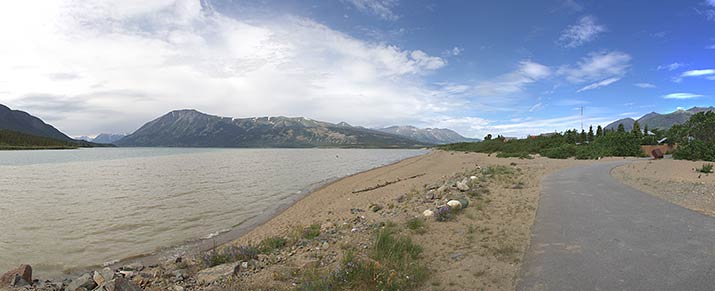This is the “Kusooa Lake” of the Tagish Indians and the “Boat Lake” of the early miners, the place where prospectors stopped after the back-breaking toil of the Chilkoot Pass. Cutting the spruce trees on the shores of the lake, they labouriously hand-sawed planking and built their boats for the long voyage down the Yukon River to the goldfields. Dr. Aurel Krause of the Bremen Geographical Society led an expedition through the Chilkat Pass in 1881 and gave the name “East Kussooa Lake”.
On an expedition in 1883 from Dyea over the Chilkoot Pass and down the length of the Yukon River, Lt. Frederick Schwatka of the US Army blithely ignored all native names of these places, and names given by miners and explorers. He made the first rough survey of the river’s course and named most of the features after superior officers, contemporary and prominent academics, and patrons of exploration. Many of his names never received official recognition.
He named Bennett Lake after James Gordon Bennett, editor of the New York Herald and a supporter of American exploration. It became one of the best-known lakes in the North because of its position and its part in the Stampede to the Klondike in 1897-99. The scene here during that period was one of intense activity, as tens of thousands of goldseekers funneled through the Chilkoot Pass and White Pass and stopped at Bennett Lake to organize themselves and build boats for the remainder of the journey to the Klondike. In the winter of 1897-98, the largest tent city in the world was at the head of the lake. Over 7,000 watercraft of all shapes and sizes passed here during an eighteen hour period on May 29 and 30, 1898. Many more would follow.
Sawmills and boatyards sprang up on Bennett Lake’s shores, and a town was built around them. Steamboats, their boilers and engines hauled with heart-breaking effort over the passes, were constructed here in a matter of weeks and, until the White Pass and Yukon Railroad to Whitehorse was completed in July 1900, they transported most of the passengers and freight to the territory.


























































